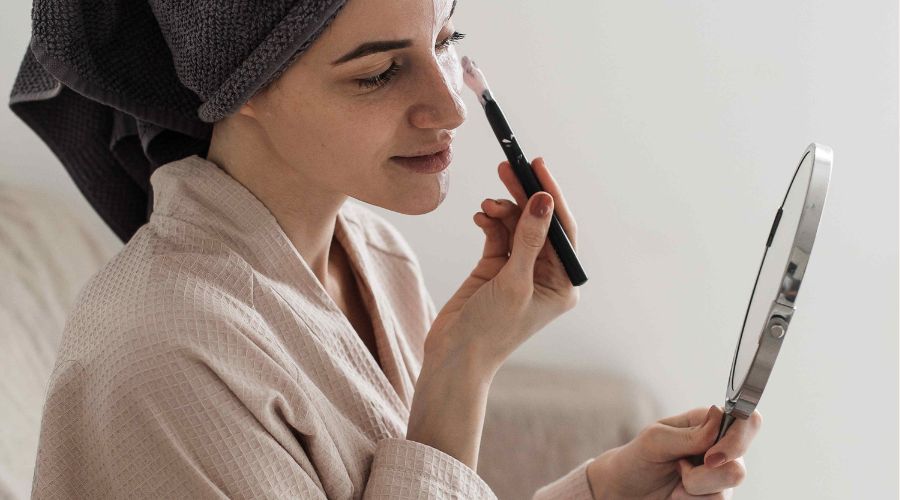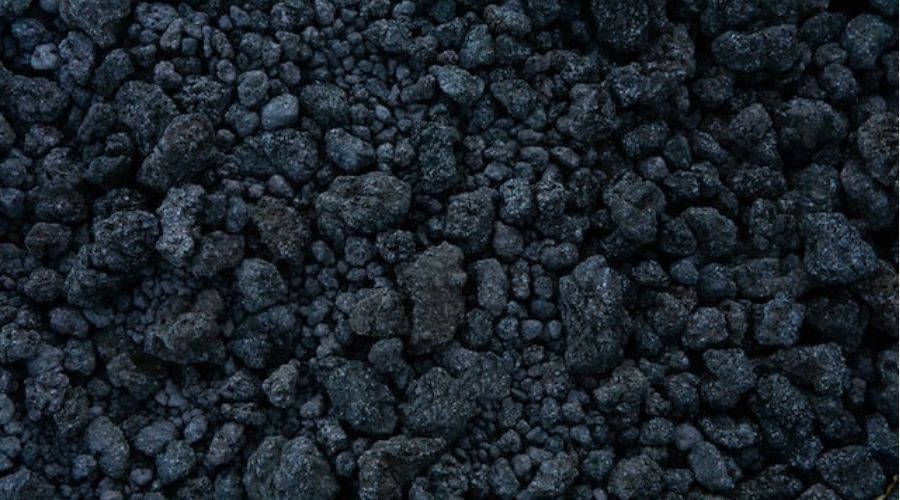
The average adult uses nine skin care products with an average of 126 unique ingredients daily.
Most of us don’t stop to think about how safe these ingredients are. In fact, we assume that every single one of those ingredients is safe to use on our bodies. After all, that’s what the FDA is for, right?
The truth is cosmetic ingredients don’t require FDA approval, so the chances of coming into contact with a harmful chemical are pretty high. Statistically, one in 13 women is exposing herself to an ingredient known to be a carcinogen.
It’s scary to imagine that something that’s everywhere in our lives is so underregulated.
What can we do about this?
Well, it starts with you, the consumer. Take your power back. Educate yourself on the ingredients to avoid in skincare so the next time you’re shopping for skincare, you can be more mindful about your purchases.
To better understand what’s safe and what isn’t, check out our thoughts on the top chemicals to avoid in face products.
10 Ingredients To Avoid In Skin Care
Needless to say, there are plenty of ingredients you should avoid, but it’s impossible to list them all. Here’s a list of 10 ingredients you may see most often in your skin care products that you should try to stay away from.
1. Lead
Lead is well-known to cause health issues, and that’s why most countries have banned its use. Unfortunately, lead can still be found in some products like body lotions, lipsticks, shampoos, eye shadows, and more. The FDA wants to limit cosmetics with unsafe lead levels, which is good news. The bad news is that a safe blood lead level has yet to be identified.
High lead levels can damage the kidneys, the nervous system, and the blood. Lead causes developmental issues in children, and there’s evidence that it’s a carcinogen.
2. Formaldehyde
Formaldehyde, a chemical used to preserve people after passing away, can be found in skin care products. Formaldehyde is a preservative in products like shampoo, nail polish, hair straightening, eyelash glue, body wash, and more. This chemical is considered a carcinogen and is linked to asthma, developmental toxicity, and neurotoxicity.
When avoiding formaldehyde, there are other related ingredients to avoid in skin care. This is because formaldehyde is released as impunity by chemicals like Bronopol, DMDM hydantoin, diazolidinyl urea, imidazolidinyl urea, and quaternium-15, so avoid those as well.
3. Phthalates
Phthalates (DBP, DEHP, and DEP) are plasticizing chemicals found in shampoos, deodorants, body lotions, soaps, nail polish, synthetic fragrances, and more. They have two functions: making the product mailable and making fragrances stick to your skin.
Phthalates are endocrine disruptors, cause congenital disabilities, and are toxic to body organs. The EU is moving to ban this ingredient, and the FDA is monitoring its use but with one hitch; if phthalates are used in synthetic fragrances, there’s no way you would know.
4. Parabens
Parabens are a family of preservatives meant to prevent the growth of bacteria and mold. They’re actually the most well-known ingredient to avoid because they’re known to cause cancer.
Nonetheless, parabens still appear in products like shampoos, body lotions, body washes, foundation, and face cleansers.
Fortunately, thanks to EU and FDA regulations, parabens are considered officially safe since most products have a minimal concentration. Still, keep in mind that parabens can be irritating to people with sensitive skin.
5. SLS (Sodium Lauryl Sulfate)/ SLES (Sodium Laureth Sulfate)
You’ve probably noticed that many companies now advertise their products as being SLS or SLES-free. That’s a sign of companies responding to consumer trends, and consumers don’t want products with SLS and SLES in them, with good reason.
SLS and SLES are strong skin, lung, and eye irritants, primarily through repeated use. They can trigger allergies and even cause organ toxicity. You can find it in skin care products that form, like cleansers.
6. Coal Tar
Of all the places to find coal, we’d rank skin care last, but here we are. Coal tar is a coal processing byproduct commonly found in hair dye and shampoo. The FDA has approved using coal tar in certain products like psoriasis shampoos. Still, there’s no indication of long-term safety in products containing coal tar so far.
It’s a carcinogen known to affect hair stylists who use it regularly over a long period. So our advice is, if you see this ingredient on a product, put that product back on its shelf.

Coal tar is a coal processing byproduct commonly found in hair dye and shampoo.
7. Carbon Black
Carbon black is part of the FDA’s list of banned toxic ingredients, but it’s still found in cosmetic products. Carbon black is a black-pigmented powder commonly found in eyeliner, mascara, eyelash glue, lipstick, etc. It’s added to these products to give them a dark, sleek look.
Some people argue that small doses of carbon black are not harmful. But, some studies have found that carbon black may, in fact, be linked to increased cases of cancer and neurodevelopmental effects in offspring, especially when it’s inhaled.
8. Triclosan and triclocarban
Triclosan and triclocarban are chemicals used as antibacterial agents, antiperspirants, and preservatives. They’re known to be endocrine disruptors. That’s not all; they’re irritants, can cause toxicity in organs, and over a prolonged period, they can cause bioaccumulation.
In the 1990s, antibacterial products containing triclosan and triclocarban were really popular, but the FDA eventually banned them in some soaps. Today you can find them in toothpaste, face wash, deodorant, and antibacterial soap.
9. Synthetic fragrance
Synthetic fragrance is basically all engineered scent agents. You can find them in basically all kinds of cosmetics.
The first problem is that synthetic fragrances can contain any combination of over 3000 different ingredients, including ingredients that can cause hormone disruptions and allergies.
The second problem is that these fragrance formulas are considered trade secrets by corporations which means they’re protected under the law. Instead of specific ingredients, they’re listed as ‘fragrance’ and ‘perfume.’
10. Alcohol
Alcohol is used in many products like soaps, toners, and cleansers. It’s used as a preservative, a drying agent, and as a means to reduce the appearance of pores.
Just seeing alcohol as an ingredient in your products doesn’t necessarily mean it’s bad for you. But, denatured alcohols like ethanol and isopropanol can be irritating to the skin. They dry out the skin to the point of destroying its natural barrier if used long enough. So if you’re shopping and you see denatured alcohol as one of the top ingredients, it’s best to check out an alternative to that product, especially if you have sensitive skin.
Why Do We Need To Avoid Toxic Ingredients in Our Skin Care?
Our skin is our largest organ. We don’t stop to appreciate this often enough. It’s our first defense against disease-causing bacteria and viruses.
Despite this, we don’t care as much about what we put on our skin as we do about what we put into our bodies.
When something is put on our skin, it doesn’t just lay there. It gets absorbed into the bloodstream. Unlike other organs, there’s nothing to filter out toxins.
Many of the chemicals have yet to be tested for safety, so the likelihood of harmful ingredients in skin care is higher than we would like. In fact, only a quarter of the thousands of ingredients found in skin care have been tested. Worse yet, only 11 have been banned.
So, it’s up to us to protect ourselves from these chemicals.
Effects of Chemicals in Skin Care Products
The most common complication from harmful chemicals is skin irritation. These chemicals can cause rashes and worsen chronic conditions like rosacea. People who may not have had issues with their skin may develop problems that need constant treatment. In fact, those with skin conditions may find their symptoms becoming worse.
For those who are pregnant and breastfeeding, these ingredients can be particularly harmful. The skin is so absorbent that these toxic ingredients can cause developmental issues and other horrible side effects in babies. This is why knowing the ingredients you don’t want in your skincare is critical.
How To Avoid Toxic Ingredients in Skin Care
We’ve discussed the ingredients to avoid in skin care, why we need to avoid them, and how they affect us. It’s time we discuss how you can avoid those chemicals.
- Do your research: The best way to keep yourself safe is to research. Knowledge is power. Look at the ingredient list of skin care products before you buy them. If unsure about the ingredients, you can Google them and see what comes up. Of course, that can be difficult since some products have long ingredient lists, so your best tool is Environmental Working Group’s Skin Deep Database. Each product gets a score depending on its ingredients. The higher the score, the more hazardous the product is.
- Shop with brands that specialize in products free of harmful chemicals, such as these natural skin care products we recommend.
- Look in your bag: Before you throw everything out, convinced it is laced with the chemicals we discussed, go through your skincare collection and look at the ingredient list. Your favorite moisturizer is safer than you thought, and you don’t have to throw it out for something else.
- Legislation: The government is doing a lousy job regulating the cosmetics industry. There’s no other way to describe it. While at this point in time, it is up to consumers to protect themselves, we need to get the government to step up. Call your representative and ask them what they’re doing to get better testing in place. Support legislation that seeks better regulation in the cosmetics industry.
Harmful ingredients can cause skin irritations, disrupt hormones, cause toxicity in our body organs, or even cause cancer. Knowing all the toxic chemicals can be challenging, but it’s an education worth having to make sure we’re only using products that are safe for us.
If you’re interested in learning more, also check out our article on the harmful chemical ingredients in cosmetic products.
Remember: Do your research, read ingredient lists, do your research, and buy mindfully.
Stella is a writer and mother from Thika, Kenya. Her love for nature and the beautiful Kenyan outdoors has inspired Stella to consciously make an effort to lead a more sustainable, eco-friendly lifestyle.
![]() Stella - Writer
Stella - Writer


